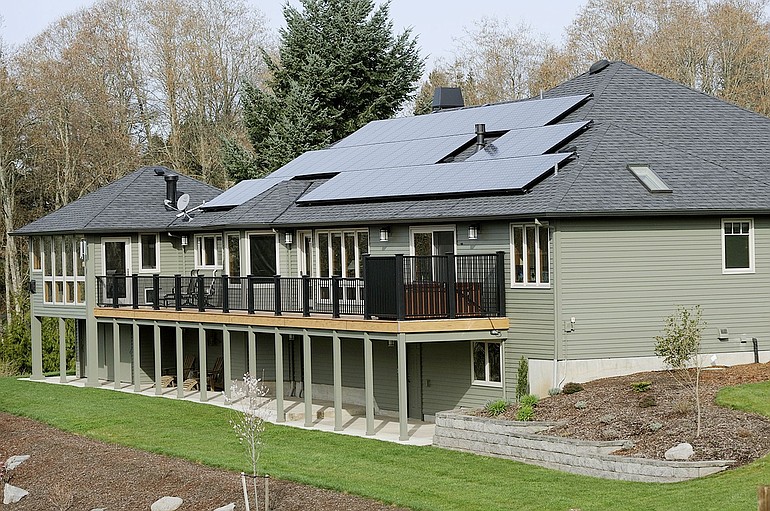Paul and Debbie Speer’s recently remodeled home holds the distinction of being the largest residential solar-power generator in Clark County.
The Speers joke that they ran out of projects at their former house, so they decided to move down the street to a 1987 ranch that needed some work. They hired Neil Kelly, a Portland contractor, to change the floor plan and rebuild the kitchen.
The project went deeper than aesthetics, however, to the very inner workings of the house.
An array of solar panels covers the roof’s south side and generates 15 kilowatt-hours of electricity. A geothermal system heats and cools the air and water in their home.
“We’re within two 100-watt light bulbs of being net-zero,” said Paul Speer, 50, the former general manager of Hewlett-Packard Co.’s Vancouver campus. “In 10 to 12 years, this won’t be unusual.”
For now, it is — although things are changing.
In Clark County, 19 out of 167,200 residential utility customers generate their own power. It’s taken 24 years to reach that number.
In 1986, a home with a small creek-powered hydroelectric system became the first in the county to install a net meter, which enables the house to both draw from the grid and feed it, said Sam Walker, an energy engineer for Clark Public Utilities.
Walker said he expects more houses to begin generating power soon. When he started his job at the utility two years ago, he received one or two calls a month from customers looking into some kind of power generation, he said; now he gets three or four inquires a week.
“Interest is definitely on the increase,” he said, adding that callers are motivated by the desire to achieve energy independence and reduce their carbon footprint.
Walker said he can appreciate the excitement about solar, wind and microhydroelectric power generation, but he often asks homeowners if they have implemented other energy-efficiency measures first.
“It doesn’t make sense to push green electrons in your home if you haven’t done that first,” he said.
The Speers tackled energy-efficiency as part of the early phase of their remodeling, which included new windows and shrink-wrapping the house to make it as airtight as possible.
Then, last summer, the focus turned to the geothermal and solar systems.
Paul wouldn’t discuss the cost of the project, but he calculates that it will take 15 to 20 years to get a return on his investment. Maybe less time, “if you assume energy costs are going up,” which he thinks is a safe bet.
“In the Pacific Northwest, we’re blessed with energy that’s almost free, so we waste a lot,” he said.
Paul tracks the house’s power generation and use from his computer.
“You do become an energy freak when you can see what you’re using,” he added.
Even homeowners who can’t commit untold amounts of money are tiptoeing into energy-retrofit projects, several experts said.
Jonathan Cohen of Imagine Energy, the Portland company that installed the Speer home’s solar system, said most residential arrays are a fraction of the size — about 3 kwh — and cost about $24,000 to $27,000.
It’s important not to launch projects in isolation, said Brian McVay of Neil Kelly. He worked with the Speers on their home’s overhaul and heads the division of Neil Kelly that provides home-performance audits.
Such audits are “a way of analytically assessing how a house is living and breathing,” McVay said. “It’s not just one contractor coming out and putting insulation in a house.”
A move like that could actually be dangerous by causing a backdraft of carbon dioxide, McVay said. That’s why the house needs to be analyzed as a system, he said.
Neil Kelly offers audits at $395 to $495, depending on the complexity of the house. The audits test air infiltration, gas-fueled appliances, ventilation systems and heat loss.
“We put it all into a system that spits out a prescription for how a house can perform better,” McVay said.
The recommendations most commonly include air sealing, insulation and furnace upgrades, with the average total ringing up at about $10,000, McVay said. For the investment, homeowners typically see a 20 to 40 percent reduction in their utility bills.
Then they can save up for solar panels.



